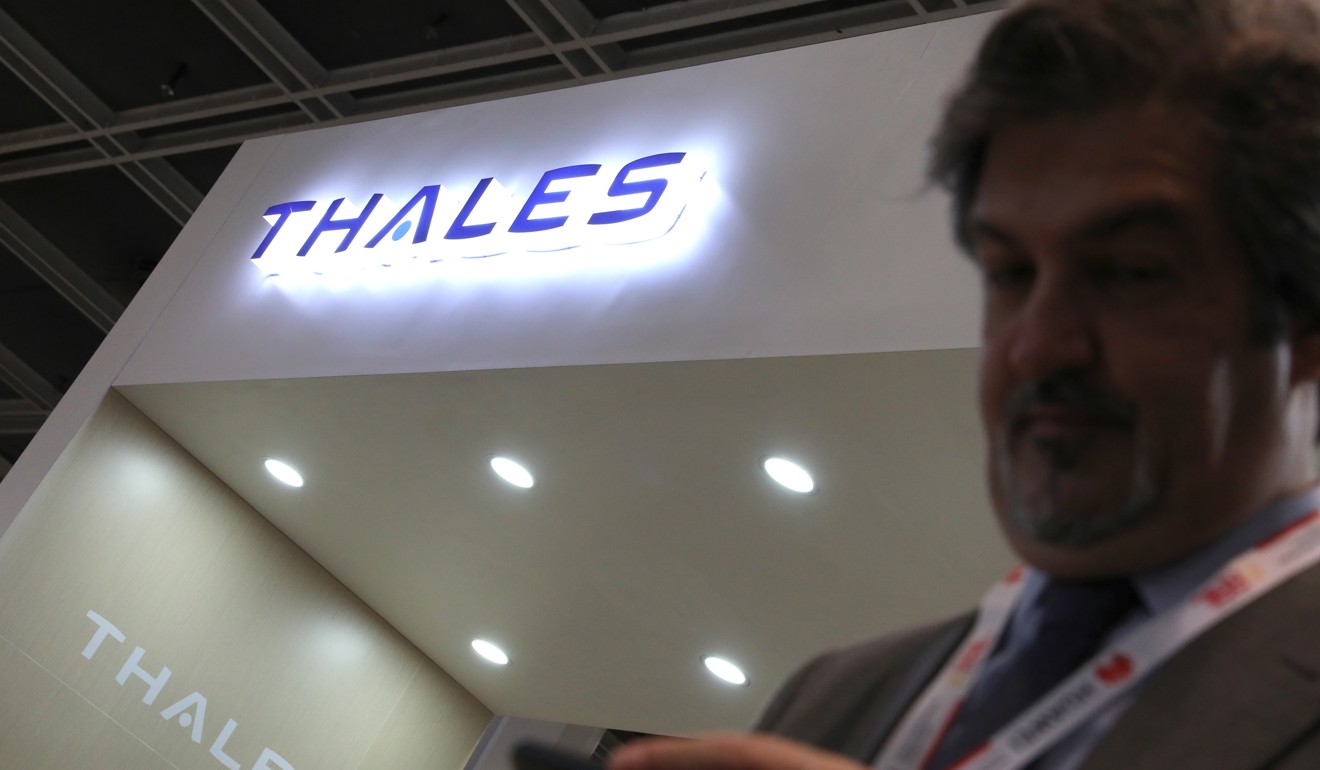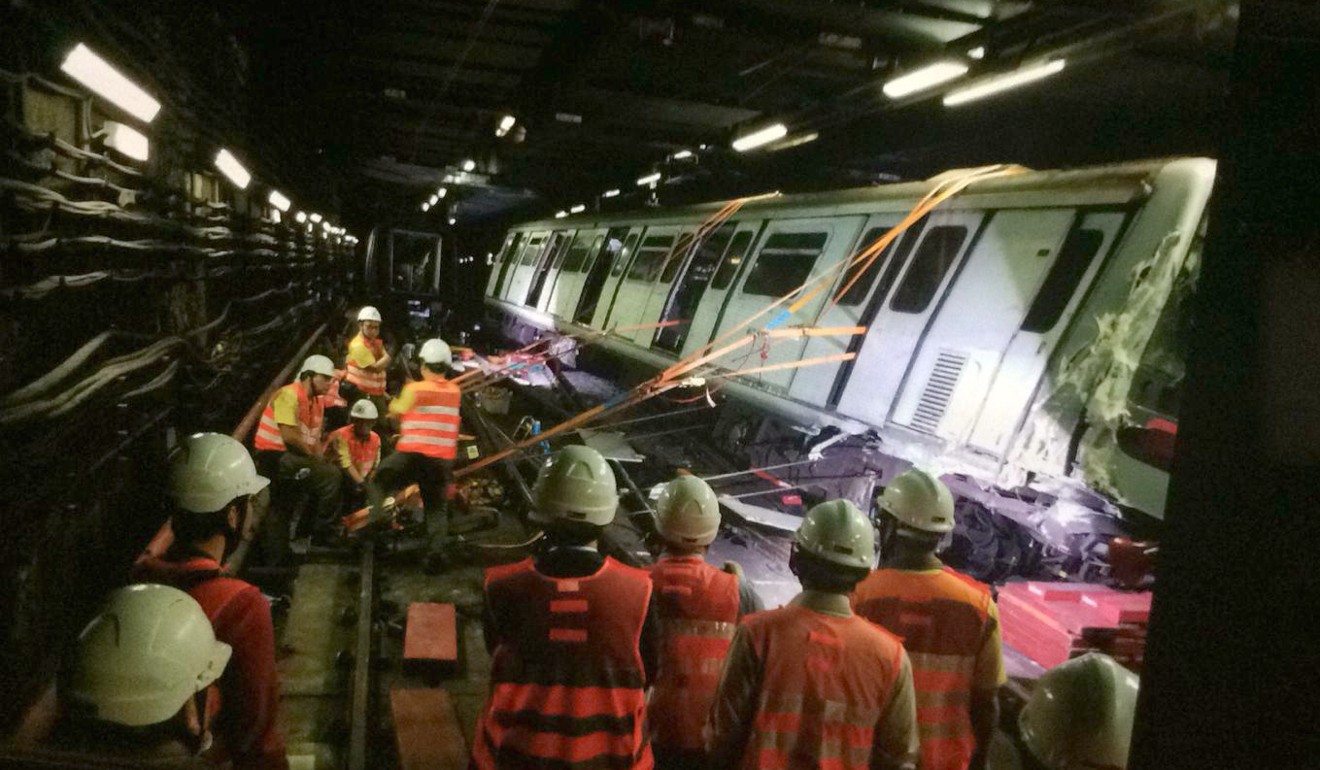
Hong Kong’s MTR Corp urged to abandon special backup for new signalling system as Canadian city Edmonton axes software supplier Thales
- Lawmaker Michael Tien says Thales should only adopt standard technology in developing its signalling systems
- French firm already embroiled in a row with MTR Corp over unprecedented train crash last month during trial run
Lawmaker and former railway boss Michael Tien Puk-sun made the urgent appeal to the rail giant after French multinational Thales, software supplier of the new HK$3.3 billion (US$420.4 million) signalling system for Hong Kong’s seven lines, was axed by Canadian city Edmonton.
“This latest incident has reinforced my belief that the MTR Corp needs to settle for the industry standard signalling system instead of pursuing cutting-edge technology – which concerns the uniquely designed second backup system,” he said on Wednesday.
Thales was already embroiled in a row with the MTR Corp over an unprecedented train crash last month during a trial run of the new signalling system. The collision sparked concerns over the system’s safety.

In the latest development, Canadian media reported that Edmonton had officially terminated the contract with Thales Canada, which built a problem-plagued signalling system for the Metro line of the city’s Light Rail Transit network. Tests, which started in December, found the system could not keep trains on schedule and caused them to stop suddenly, the city said.
“We are not the first city to experience significant reliability issues with Thales,” Edmonton mayor Don Iveson was quoted as saying. “Their shortcomings are well documented, from New York to Singapore to Hong Kong.”
MTR faces record HK$25 million fine over Tsuen Wan line crash
However, Thales reportedly countered that since work on the line began in 2011, the city had continually asked for changes to the system which fell outside the original scope of the project.
Tien, a former chairman of the Kowloon-Canton Railway Corporation, said the latest incident led him to strongly believe that Thales was not ready to develop special technology for its signalling systems.
“I am becoming more convinced that Thales is only suitable for adopting standard technology in developing its signalling systems. It’s still not ready to develop some specially designed advanced features,” he said. “That’s why the MTR Corp should drop the uniquely designed second backup for the new signalling system.”

The March 18 crash happened when two trains collided at a crossover junction near Central station during an overnight trial of the new signalling system. One carriage was derailed, injuring a driver. No passengers were on board. The result was an unprecedented two-day service breakdown between Admiralty and Central on the Tsuen Wan line.
Political rivals join forces to urge government to overhaul MTR management
Tien said the industry standard only covered the main signalling system with one backup. But the MTR Corp had demanded Thales design a second backup to make the system more reliable.
“I told my reinforced belief to the MTR management that they should abandon the second backup. They promised to seriously consider it but expressed worries that they were unable to obtain a refund for dropping the second backup,” he said.
The rail giant said the collision occurred during tests that simulated a switch to the second backup in a scenario in which both the main and first backup systems failed.
MTR Corp bosses had suggested the crash was caused by a software flaw in the system, resulting in the two trains being assigned the same crossing, which they called unacceptable.
Lam Wai-keung, chairman of the Hong Kong Federation of Railway Trade Unions, said the corporation needed to ensure the safety of the new signalling system before doing trial runs.
“Our stance is very simple. We don’t care how many backups are installed for the signalling system, but our company needs to ensure the system is sufficiently tested before it is allowed to undergo a trial run,” he said.
Carrie Lam ‘not really satisfied’ with slow progress on railway expansion
Lam said the rail company needed to ensure the fail-safe mechanism functioned properly for stopping trains in the event of a system failure. “I am actually more concerned about the fail-safe function of the system. No system is failure-free but we need to have an effective fail-safe mechanism to safeguard the safety of the system,” he said.
An MTR spokeswoman said the corporation was aware of the latest development and would seek more information. “The contractor has the responsibility to supply a safe new signalling system to the corporation for train testing,” she said.

